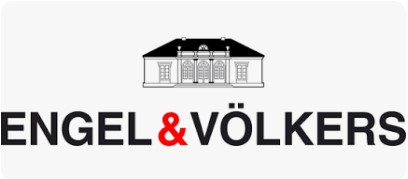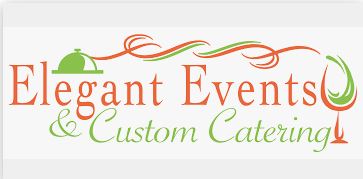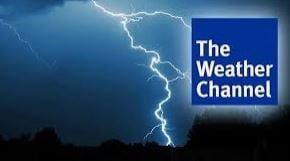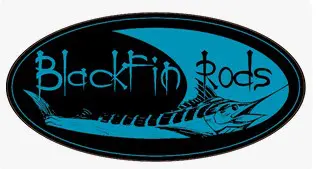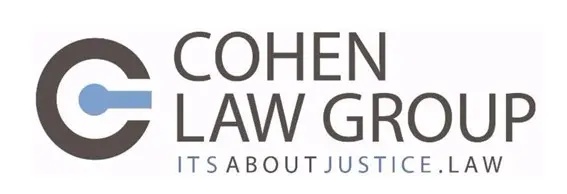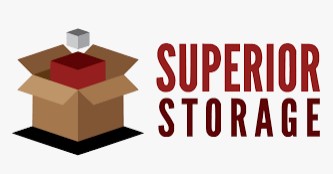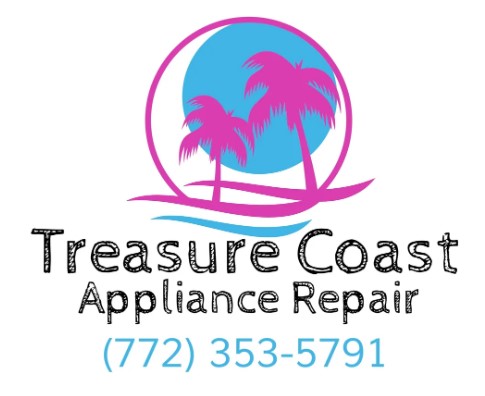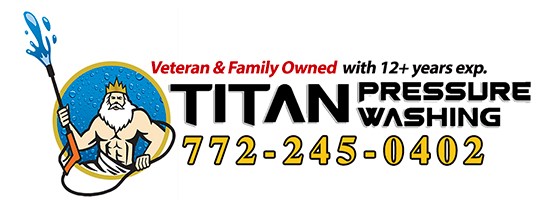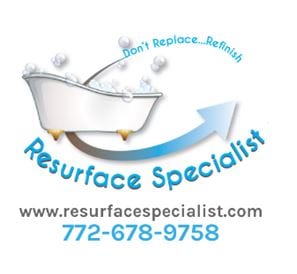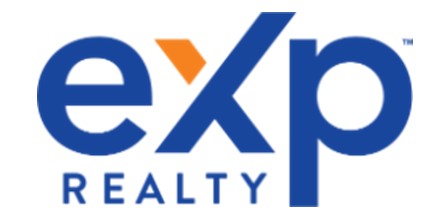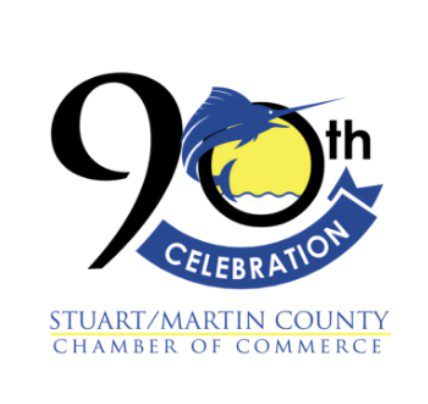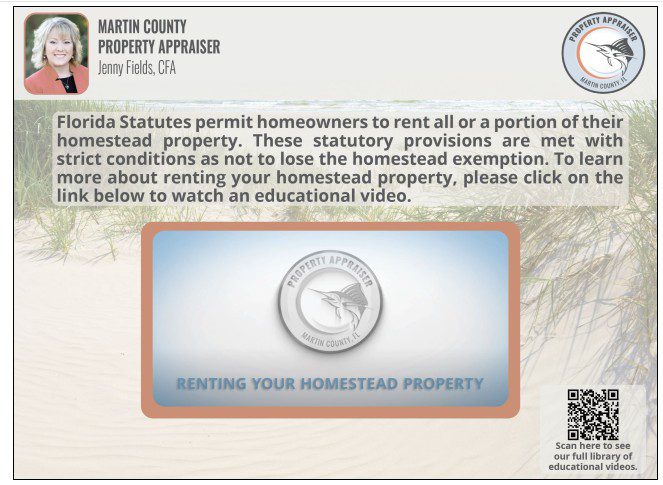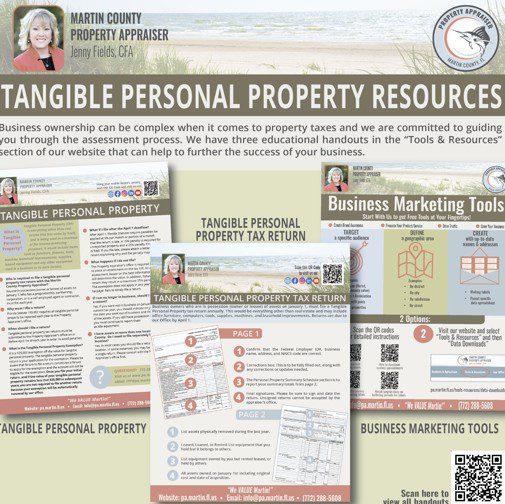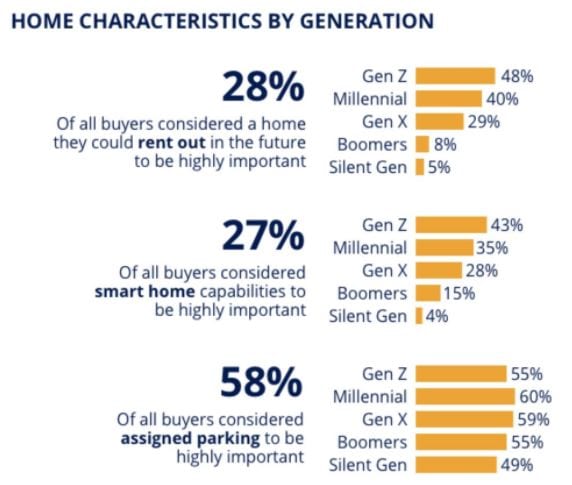
CLICK ABOVE TO SEE VIDEO
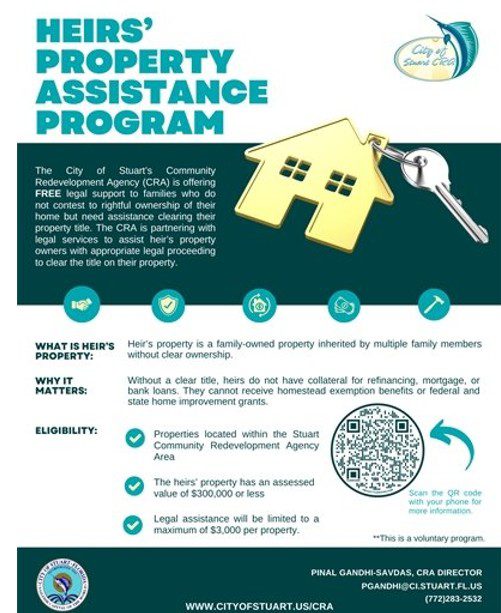



Season Waits for No One – Start Prepping today!
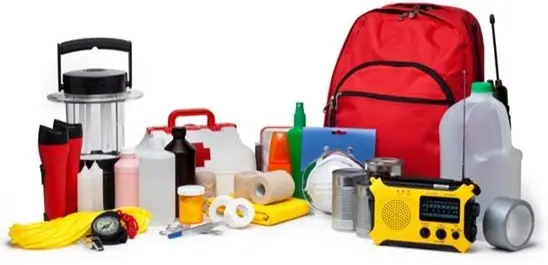
Hurricane season (June 1 - November 30) may seem far off, but we are just 58 days away from the start of the season. Waiting until a storm is on the horizon can leave you scrambling for supplies, fighting crowds, and risking your safety. The key to protecting your home, family, and property is early preparation.
By starting now, you can secure essential items before store shelves are empty. Stock up on non-perishable food, bottled water, batteries, flashlights, and medications. Review your emergency plan with your family, ensuring everyone knows evacuation routes and safety procedures. If you have pets, make arrangements for their care as well.
What can you do today?
Stock up on essentials – Water, non-perishable food, batteries, flashlights, and medications should be on hand before a storm is named.
Review your emergency plan – Know your evacuation routes, have a communication plan with family, and ensure important documents are secured.
Prepare your home – Trim trees, secure outdoor furniture, and check shutters to ensure they’re in working order.
Check insurance coverage – Review your homeowner’s or renter’s policy to ensure you’re protected against storm damage and flooding.
Don’t wait until it’s too late. A few small steps today can make all the difference when the next storm is headed our way. Stay safe, stay prepared, and let’s weather the season together!
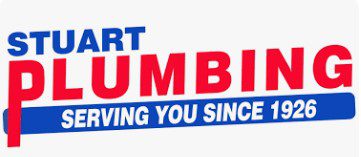
10 Ways to Prepare Your Home for Summer Weather

Summer is around the corner, and it’s shaping up to be a scorcher.
According to the Farmers’ Almanac’s summer 2024 forecast, most regions in the United States can expect the hottest temperatures in recorded history. The Almanac predicts a warm, hot, and muggy summer for most of the nation, except for the Northwest region where more seasonable summer temperatures are expected.
The Southwest and Pacific Northwest are expected to see dry conditions for most of the summer. While New England and most areas east of the Mississippi River are on track to have yet another wet summer; Thunderstorms are predicted to be plentiful in the Great Lakes and Midwest region of the country.
Tune up your HVAC system
An inefficient HVAC system can drive up your summer cooling costs. Hire a professional HVAC technician to service your system before summer begins to ensure it will run smoothly during the hot-weather months. According to Angi data, a tune-up costs an average of $250 — less than half of the cost of the average HVAC repair bill.
Change HVAC air filters
A clean HVAC filter can reduce allergens in your home and help your HVAC system run easier. Changing your HVAC filter at least once every three months.
Rotate ceiling fans counterclockwise
When used properly, a ceiling fan can help keep a room cool. In the summer, you should set your ceiling fans to rotate counterclockwise. This will help circulate cool air and push it down into your room, creating a cooling effect throughout.
Plug air leaks
A poorly insulated house can jack up your utility bill, but you can combat it with a combination of air sealing and proper insulation. Check your home’s attic, windows, and exterior doors for gaps, and seal them before the summer months to help keep conditioned air inside your home.
Bonus: Adding insulation also means you’ll save money in the winter by keeping warm air inside your house. Indeed, homeowners can save an average of 15% on heating and cooling costs by air sealing their homes and adding insulation in their attic, floors over crawl spaces, and basements, the EPA estimates.
Program your lawn sprinkler system
Your lawn may need some extra hydration to sustain long, hot summer days. A professional can help make sure your sprinklers are functioning with proper rotation and power and you’re not over-watering your lawn, as many homeowners are guilty of doing.
Running your sprinklers in the evening or early morning to avoid the hottest part of the day.
Aerate your lawn
Aeration entails making small holes in your yard to allow for better water penetration, helping the soil breathe and soak up nutrients. You can do the task yourself by renting a core aerator from a local home improvement store, or hire a professional aeration service. Depending on the size of your lawn, aeration typically costs between $75 and $203.
Deep clean your outdoor grill
Cookouts are synonymous with summer, so make sure your grill is ready for barbecuing. If you have a gas grill, first scrub the grates with a grill brush and then soak them in a mixture of 2 cups of vinegar and 1 cup of baking soda. Dust off any cobwebs from your grill, which can cause a flare-up if they ignite, and clean the outside of the lid and bowl with soap and water.
Cleaning methods can vary based on the type of grill you own. Home Depot provides step-by-step cleaning guides for gas, charcoal, and pellet grills.
Clear out gutters
Heavy rainfall can spell disaster if your gutters are clogged. Clearing out dirt and debris can help prevent water backups. This is a project that really should be left to the professionals, as it can be dangerous for the inexperienced and can also cause damage to your home if done incorrectly.
A professional gutter cleaning costs between $119 and $234 on average, HomeAdvisor reports. (Gutter cleaning for two- and three-story homes tends to cost more than single-story homes.)
Keep indoor humidity in check
Generally, your home’s indoor humidity level should stay around 40% to 50% in the summer months. Humidity levels of 60% or higher can lead to mold and dust mites, according to the EPA. If necessary, purchase a dehumidifier to draw excess moisture from the air.
Consider getting flood insurance
Floods can happen anywhere. In fact, more than 25% of flood insurance claims are filed by people who live outside high-risk flood areas, according to FEMA. However, flooding isn’t covered by most standard home insurance policies.
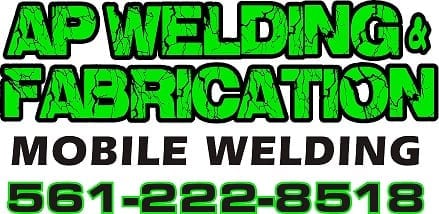



Hurricane Preparedness Preparing the Exterior of Your Home

As we move into the most active period of the hurricane season, it's essential to take proactive steps to safeguard our homes against the destructive forces of these powerful storms. The exterior of your home is the first line of defense against hurricane damage and preparing it properly can significantly reduce the risk of costly repairs and ensure the safety of your loved ones. Here are some vital tips to help you fortify the exterior of your home against hurricanes.
Inspect and Reinforce Your Roof
Check for Damage: Inspect your roof for loose or damaged shingles and repair them promptly. A well-maintained roof is crucial for preventing water infiltration during heavy rains.
Secure Loose Items: Ensure all roof vents, skylights, and chimneys are securely fastened. Consider installing hurricane straps or clips to reinforce the roof structure.
Protect Windows and Doors
Install Storm Shutters: Permanent storm shutters are the best protection for windows. If these are not available, pre-cut plywood panels can be a temporary solution. Make sure they are properly sized and labeled for each window.
Reinforce Doors: Ensure all exterior doors have at least three hinges and a deadbolt lock. Consider installing stronger door hardware and bracing kits designed to withstand high winds.
Secure Outdoor Items
Bring in Loose Items: Bring in all outdoor furniture, decorations, garbage cans, and anything else that can become a projectile in high winds.
Anchor Heavy Objects: Securely anchor larger objects, such as grills and storage sheds, to the ground or a stable structure.
Clear and Maintain Gutters and Drains
Clean Gutters: Regularly clean gutters and downspouts to ensure they are free of debris. This will help prevent water damage to your roof and walls.
Check Drainage Systems: Ensure your property's drainage systems are working correctly. Clear any obstructions from storm drains, and make sure water flows away from your home.
Trim Trees and Shrubs
Prune Branches: Trim any trees and shrubs near your home. Remove dead or weak branches that could break off during a storm and cause damage. Do this before a storm threatens. Once a storm is imminent, removed branches and limbs can become projectiles.
Consider Tree Removal: If you have trees that are too close to your home or are in poor condition, consider having them professionally removed to reduce the risk of them falling during high winds.
Reinforce Garage Doors
Strengthen Garage Doors: Garage doors are often the weakest point in a home during a hurricane. Consider installing a garage door brace kit or reinforcing the door with additional hardware to prevent it from being blown in.
Check Your Insurance Coverage
Review Policies: Ensure your homeowner's insurance policy covers hurricane and wind damage. Consider additional coverage for flood damage if you are in a flood-prone area.
Document Your Property: Take photos or videos of the exterior of your home, including any improvements you make, for insurance purposes.
Final Preparations
Emergency Kit: Keep an emergency kit with essential supplies, including water, food, medications, and important documents, in a waterproof container.
Evacuation Plan: Have a clear evacuation plan and know the local evacuation routes. Ensure all family members are familiar with the plan and have a designated meeting place.
By taking these steps to prepare the exterior of your home, you can significantly reduce the risk of damage and increase your peace of mind during hurricane season. Stay vigilant, stay informed, and let's work together to protect our community.

A/C Vents: Leave Open or Closed?
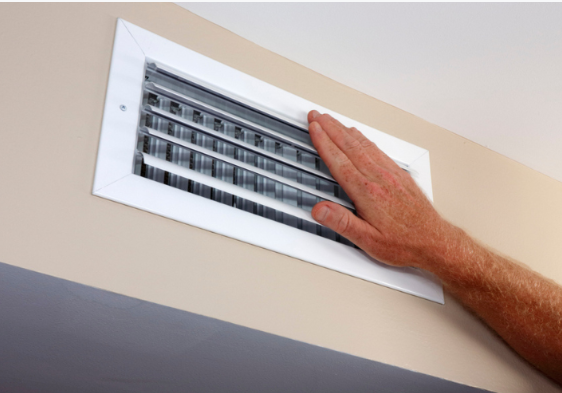
Closing vents in rooms they're not using is best, thinking unused vents are like leaky faucets, pouring precious cool air into the void.
But here's the twist: closing vents can backfire, causing more harm than good for your system.
Closing vents won't save energy
In fact, closing vents can disrupt the balance of your modern central air conditioning system, which is designed to distribute air evenly throughout the entire home. This can lead to increased pressure in the ducts and potential system inefficiencies.
Instead:
Keep all vents open to maintain the system's designed airflow. This ensures air conditioner efficiency and desired comfort level without strain on your system.
Upgrade your A/C if it's over 10 years old for 20-40% savings. Choose a high-efficiency, appropriately sized model with high SEER2 ratings and ENERGY STAR® qualification. Use one of our qualified contractors on your project and receive an instant $150 rebate.
3 Tips to Boost Your A/C Efficiency
Seal air leaks:
Check window seals each season.
Caulk cracks.
Replace weather strips on doors.
Control heat intake:
Install window coverings.
Set a comfortable thermostat temperature.
Use a programmable or smart thermostat to avoid unnecessary cooling.
Maintenance:
Schedule regular check-ups.
Replace filters monthly.
Perform annual coil inspections.

Martin County Community Land Trust Gets Green Light as New Nonprofit Focused on Local Affordable Housing Solutions
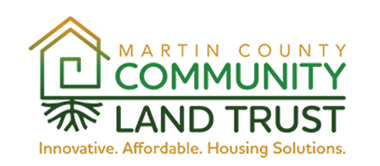
Article Contributed by Reilly Weidner- The Firefly Group
Hobe Sound – The Martin County Community Land Trust, a newly formed nonprofit dedicated to improving lives through strategic investments in affordable housing solutions, is pleased to announce its official recognition as a 501(c)(3) organization from the U.S. Internal Revenue Service.
“Achieving this designation as a 501(c)(3) nonprofit is a significant milestone for our organization,” explained Harold Jenkins, Chairman of the Board of Directors for the Martin County Community Land Trust. “It not only provides tangible benefits like tax exempt status and the ability to apply for grants, but it also symbolizes official recognition of our commitment to serving the public good.”
“We all know how much the cost of buying a home has increased,” Jenkins said. “Demand is far greater than supply right now, and rental units are hard to find. Working families are struggling, and we need to take a new approach. The housing crisis in Martin County is the key reason we created this local Land Trust,” added Jenkins.
With its official nonprofit designation, the Martin County Community Land Trust can now accept donations of public and private lands and, using donated funds from the private sector, purchase land and houses in Martin County.
Why Create a Land Trust?
The Martin County Community Land Trust was created in 2023 as a collaborative effort between community leaders and local government. The Community Land Trust (CLT) Model is designed to preserve affordable housing in perpetuity, one generation after the next.
The local land trust acquires land and serves as the permanent repository and steward for the residences that are built upon it. Community Land Trusts ensure long-term affordability for renters and homeowners by separating ownership of the land from the structure on top of it.
“Because the Martin County Community Land Trust will continue to own the land, the community can be assured that the housing built on it will remain affordable,” Jenkins added.
How the Land Trust Works.
The new housing units on properties owned by the Martin County Community Land Trust are sold or leased at affordable prices.
Prospective buyers and renters are screened to ensure these affordable housing options are offered to people who need them most: families at 50% to 80% of the area’s median income that might otherwise not be able to afford a home in a safe neighborhood with amenities such as good schools.
“Having a stable home, whether you own or rent, is crucially important to a family’s well-being and to the health of the greater community,” said Martin County Community Land Trust Executive Director Wendy Reynoso. “With this innovative solution to our housing crisis, our entire community will benefit.”
With a volunteer Board of Directors and a compelling mission, the Martin County Community Land Trust is now ready to create long-term benefits for the community. For more information about how a Land Trust works and how Martin County is addressing housing solutions, visit www.MCCLT.org.

Conservation Easements: A Win-Win-Win Land Strategy

Article by Rick Hartman - One Martin
What is a Conservation Easement?
Conservation easements are agreements between landowners and conservation organizations and/or government agencies. They're binding agreements that limit how the land can be used in the future to protect its natural features, like wetlands and uplands, as well as critical wildlife habitats and corridors.
They can permit the continuation of agricultural activities while also preserving open space and environmentally sensitive lands. They can protect natural resources, maintain or enhance air or water quality, and preserve sites or properties of historical, archeologic or cultural significance.
When structured properly, the restrictions will remain in place and ensure the land stays preserved for conservation purposes in perpetuity regardless of ownership.
How does a Conservation Easement Work?
A conservation easement is a permanent restriction of use placed upon a piece of land to protect it from development.
A landowner decides to protect all or a portion of land from future development or changes.
The landowner collaborates with a conservation organization such as a land trust or a government agency that is dedicated to preserving natural areas.
A legal agreement (the conservation easement) is created. This agreement outlines specific rules and restrictions for how the land can be used in the future. For example, it might prohibit any future development, limit mining, or protect habitat for endangered species.
Once the easement is in place, it stays with the land forever. Even if the original owner sells the land, the restrictions and rules in the easement agreement stay in place for all future owners.
Who Benefits?
This is where the beauty of conservation easements comes through.
Everyone benefits.
They are a win for people who like to see expanses of land stay as close to Old Florida as possible and who want them protected in perpetuity.
They’re also an important win for farmers and ranchers. It’s fine to say that we don’t want agricultural land to be developed. But what if you are the farm or ranch family that is struggling to stay afloat in the face of overwhelming challenges – rising costs of everything from equipment to fertilizer, competition from national and international markets for products, weather and more weather, and the fact that lots of families have no one in upcoming generations to take over the operations. Younger people have lots of opportunities, and most of them are a lot easier and more lucrative than farming or ranching.
A conservation easement can provide family farms with the ability to monetize their asset in ways other than selling the land for future development. By providing alternate ways to capitalize on the value of the land, we enable the preservation of large swaths of Florida that author Patrick Smith affectionately called “A Land Remembered.”
Florida wildlife also gets a good deal out of conservation easements because important natural areas are preserved as habitat. Some conservation easements are part of a statewide Florida Wildlife Corridor. The Corridor comprises nearly 18 million acres of contiguous wilderness and working lands crucial to the survival of many of Florida’s 131 imperiled species. Since 2021, the Florida legislature has budgeted nearly $2 billion for protecting land in the Florida Wildlife Corridor.
What are the Typical Restrictions on the Land Within a Conservation Easement?
It depends on the land itself and the goals of the parties involved in the agreement. Any of these could be included:
Development Restrictions that restrict or outright prohibit new construction.
Habitat Protection to safeguard critical habitats and prevent activities like logging or draining.
Bans on Certain Activities like mining, clear-cutting forests, or using certain types of pesticides or chemicals that could harm the environment.
Agricultural Use Restriction to ensure farming practices are sustainable and don’t harm the land’s conservation values.
Sounds good so far, right? But we know the devil is in the details and conservation easements can go wrong if they’re not done right.

Homestead Property Rental

Renting your home for more than 30 days per calendar year, for two (2) consecutive years or renting it for more than 6 months in one year may cause you to lose your homestead exemption. To determine if you are renting properly, learn more by watching this educational video. Click here for video
Skip a Week of Irrigation
Maintaining a Healthy Lawn

Article by: Southwest Florida Water Management District
Proper lawn maintenance is vital for the long-term health of your lawn. Appropriate mowing and watering practices must occur so your lawn will have a healthy root system, be more drought-tolerant and be able to resist pests and disease.
When Mowing
Never remove more than one-third of the leaf blade at any one time. Cutting too much of the leaf blade can stress your lawn. If your lawn is under any stress (shade, traffic, drought, etc.), raise the mowing height.
Mow at the highest height for your grass species. See chart for specific types. Mowing at lower heights can result in a shallow root system.
Keep your mower blades sharp. A dull blade tears the grass blades, making the grass unattractive and prone to insect or disease invasion.
Do not mow when lawn is wet. This is dangerous for you, tough on the mower and bad for the grass.
If you miss a weekly mowing, raise the mower height so you do not remove too much of the grass blade. Bring the height back down to the recommended level gradually over the next few weeks.
Keep grass clippings, vegetative material and vegetative debris away from storm drains, ditches, water bodies and roadways.
Leave grass clippings on the ground. They do not contribute to thatch, and they return nutrients and organic matter back to the lawn.
When Watering
Irrigate around sunrise or in the early morning hours. You want the leaf blades to dry out fully during the day.
Do not apply water to just wet the top of the soil; this will result in a shallow root system. Apply enough water to encourage deeper root growth.
In most parts of Florida, irrigate to apply ½–¾ inch of water. Heavier clay soils need only about ½ inch of water while sandy soils may need up to ¾ inch of water.
Irrigation System Tips
More lawns are damaged by improper irrigation practices than by any other practice. Take control of your automatic irrigation system using these tips:
Florida law requires that all irrigation systems have working rain sensors to override the system when enough rain has fallen. Check your rain sensor to see if it’s installed correctly and still working.
Sprinkler heads are easily misaligned or broken, which can lead to improper water application to your lawn and may waste water as runoff. Inspect your irrigation system regularly.
To find out how long you need to run your irrigation system, perform a catch-can test (see “Water-In Fertilizer” in Step 4). If applying these amounts causes runoff, reduce the amount of water applied. In some soils it may be necessary to first apply half the amount needed, let it percolate through the soil, and then apply the remaining water a short time later.
Turn your system to the “off” or “manual” position. Water only when leaf blades start to fold in half lengthwise or when footprints remain visible for a few minutes. Irrigate when about 30 percent of the lawn shows these signs, unless rain is forecast in the next 24 hours.

5 Easy Steps to a Florida-Friendly Yard

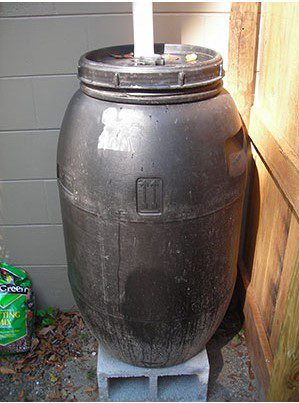
Article by: Florida Extension Office
A simple rain barrelWhat is Florida-Friendly Landscaping™? It's a way of designing and protecting your home lawn and garden while preserving Florida's natural resources. With a few easy tips and tricks, Floridian homeowners can save themselves time, money, effort, and energy in their yards while doing their part to protect the state's ecosystems, wildlife, and water supply.
The Florida-Friendly Landscaping™ program delivers nine principles for the savvy gardener, like choosing the right plants, watering efficiently, and fertilizing appropriately. However, if you're not ready to tackle all nine, check out the five easy tips below to get started with your Florida-friendly yard.
Choose the Right Plants
Select low-maintenance plants suited to your yard conditions (light, soil, climate, and moisture level). Group plants with similar light, water, and nutritional needs together. Select plants that won't require frequent pruning, and remove invasive plants from your yard. To create a personalized plant list for your home landscape, visit the Florida-Friendly Landscaping™ Program website.
Water Efficiently
Water plants only when they need it. Don't be afraid of a little wilt—wilting shows you that plants are ready for water. Use low-volume irrigation, such as a drip or micro-spray system, in your plant beds, and run your irrigation system or sprinkler in the evening or early morning so wind and sun don't evaporate the water before it can reach the roots. Make sure you are irrigating turf and plants, not sidewalks or driveways!
Collect and Use Rainwater
Install a rain barrel. You can buy one at a garden center or large home improvement center, or you can build a customized one to suit your needs. Rain barrels can help save some of Florida's wet-season water for use during drier times of year. Replace impermeable surfaces like concrete or asphalt with permeable materials like mulch, gravel, or paver stones to allow rainwater to soak into the soil. Put mulch around plants and trees (12 inches from the trunk) to help keep soil moist.
Fertilize Appropriately
Fertilize only when needed, using a fertilizer containing slow-release nitrogen. Always read and follow the directions on your fertilizer bag label, taking into account the individual plant's needs. Compost and other soil amendments can improve soil health, which in turn improves plant health. And remember, grass doesn't always need fertilizer to stay green. Adding supplemental potassium in the winter and iron in the summer are other options for improving color.
Raise Mower Blades
Always use the highest recommended setting for your grass species. Higher mowing encourages deeper rooting, which allows grass to survive dry spells better and resist pests and disease more easily. See Mowing Your Florida Lawn for more information on the highest recommended mowing heights for each grass species.
9 Beautiful Backyard Landscape Ideas
SBA Helps Floridians Build Back Stronger Increase Loan to Mitigate Future Disaster Losses

Florida residents and businesses approved for a disaster loan from the U.S. Small Business Administration (SBA) as a result of Hurricane Ian, Hurricane Nicole and the severe storms, tornadoes and flooding in Broward County, have two years from the date of their loan approval to request an increase to prevent or minimize damages from similar disasters in the future. Mitigation funds from the SBA are an affordable way for survivors to rebuild smarter, stronger, and pay for improvements that protect life and property.
“The opportunity to include measures to help prevent future damage from occurring is a significant benefit of SBA’s disaster loan program,” said SBA Associate Administrator Francisco Sanchez, Jr. “I encourage everyone to consult their contractors and emergency management mitigation specialists for ideas and apply for an SBA disaster loan increase for funding.”
Businesses and homeowners may be eligible for a loan increase up to 20 percent of their physical damages, as verified by the SBA, to cover the cost of improvements. Examples of mitigation improvements may include hurricane-rated garage doors, hurricane shutters, or pressure-rated windows. Also, mitigation can be used to install a safe room or storm shelter built to Federal Emergency Management Agency guidelines. To learn more about mitigation options visit sba.gov/mitigation.
For more information, call 800-659-2955 (if you are deaf, hard of hearing, or have a speech disability, please dial 7-1-1 to access telecommunications relay services) or email DisasterCustomerService@sba.gov and ask about increasing your SBA disaster loan for mitigation purposes.
Out2News.com LLC. is your Treasure Coast online newspaper, “Who they are, what they do and where they do it”?
Do you have something to say, an event to talk about? An event you would like to have covered. Do it here!
Email your story or request to: rshall@out2news.com
Out2News adheres to full compliance with C.O.P.P.A. (Children’s Online Privacy Protection Act of 1998)
“YOUR" Treasure Coast Newspaper & Photo Journal
Copyright © 2023 Out2News.com LLC. All Rights Reserved.
What is Real Estate?
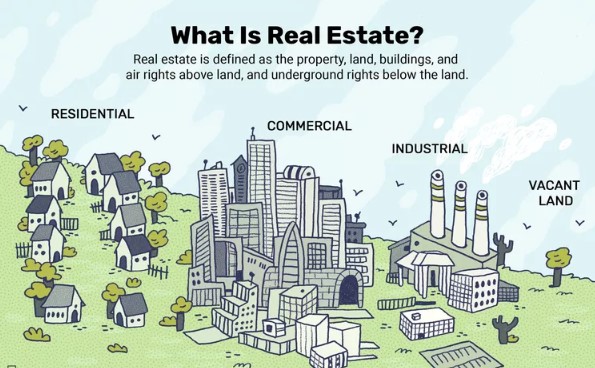
Real estate refers to real, or physical, property, and can include land, buildings, air rights above the land, and underground rights below the land. As a business term, real estate also refers to producing, buying, and selling property.

What Homeowners Can Do With All Their Stuff?
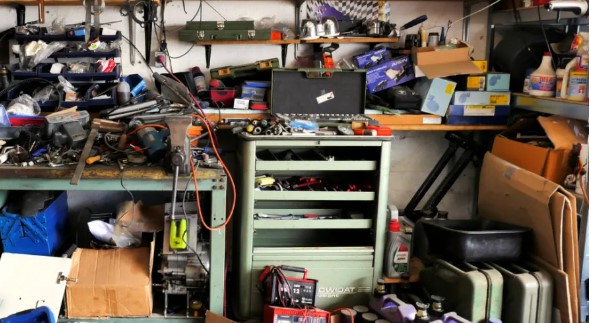
Article by: Barbara Ballinger
Share with sellers the financial advantage of only taking with them what they’ll use.
Explain how breaking down the process into smaller tasks can lighten the stress load.
Offer ideas on how to dispose of belongings by selling, donating or sharing.
Decluttering makes moving easier for everyone—and less costly, too. It is also helpful for those who want to live more simply in their current residence. In fact, homeowners who have less clutter and are more intentional about what they bring into their space find that a positive for both their mental and financial health.
Many saw the wisdom of doing so during the pandemic when they were stuck at home, looked around, and wondered: Why do I have all this stuff that I never use?
Now, in the dead of winter when many again are indoors for long stretches, can be a good time to encourage clients to begin. Advise them to think of it as an adventure they pursue gradually rather than feel pressure to tackle all at once.
Truly effective—and lasting—decluttering represents a multistep process that varies according to each person’s situation. Those who have inherited a roomful of brown furniture from the 1950s and ‘60s and stacks of books, photo albums, crystal, and more may feel overwhelmed if they don’t want or can’t fit these furnishings into their home or apartment or find consignment shops interested in selling pieces, often because they have so much that’s similar from others hoping to unload possessions.
Start the Year with Bold Color and Pattern

Photo by:Dane Austin Design / Article by: Barbara Ballinger
After years of touting grays, beiges and greiges, design pundits are encouraging homeowners to embrace vibrant hues and lively patterns. The trick is doing it right.
Neutral, solid colors have dominated interiors for years. Countertops, backsplashes, floors, walls, ceilings and upholstery boasted blocks of beige and myriad gray hues. Things are changing though. Many homeowners are eager to punch up their surroundings and go bold.
In addition to the now-tired, spa-inspired palettes of recent years, other reasons explain the current move toward exuberance. For starters, homeowners crave a change after the past two years. “Pattern adds excitement, personality and energy, and keeps a room from looking flat,” says designer Rebecca Pogonitz of GoGo Design Group. The same can be said for the effect of vibrant color. Also, homeowners nowadays have less concern for what future buyers will think. “I tell my clients to design for yourself and enjoy your space rather than for the person who may live there next,” says designer Dane Austin of Dane Austin Design. And just like less concern, there are also fewer rules about mixing motifs like stripes and plaid and colors on a room’s surfaces.
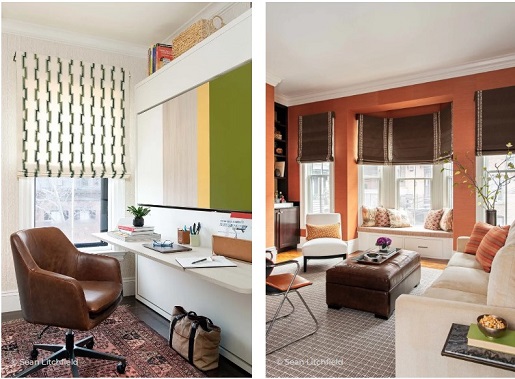
Finally, technological breakthroughs combine visual appeal and minimal maintenance. For instance, “performance” wallpapers and fabrics are easier to clean, says designer Marina Case of The Red Shutters. Larger digital printers allow bigger-scale designs to be manufactured, says Tom Segal of Kaufman Segal Design.
Synthetic quartz has bolder “veining” that conceals stains and scratches, says designer Jacob Laws of Jacob Laws Interior Design. And wallpaper thickness has increased, which reduces tearing when hung and removed, says DeAnna Hain, executive vice president, marketing, of York Wallcoverings.

Photo by Rebecca Pogonitz, GoGo Design Group
In using patterns and bold patterns today, the biggest decisions are how to choose from a vast array of options and mix them deftly. The finished look should appear fresh rather than dated. Design experts offer these tips to share with clients.
Be Bold, But Don’t Overdo It
While more than one pattern and a few bold colors can visually work well in the same space, designer Jodi Swartz of KitchenVisions recommends keeping the mix to one bold pattern. Consider which pattern will operate as the star of the show, and use other patterns and colors as supporting characters, says Austin and Laws.

High-Tech Alternative to Gas Stoves Steals the Spotlight

Article by: Melissa Dittmann Tracey
Homeowners have long favored gas stoves over electric; real estate pros often list a six-burner gas stove as a kitchen upgrade. But lately, they’ve been coming under fire.
In case you’ve missed the controversy, a member of the Consumer Product Safety Commission recently suggested a ban on gas stoves, calling them a “hidden hazard” in the home. The CPSC has since backtracked those comments but says it plans to probe the hazards associated with gas stoves. Recent studies have linked emissions from gas stoves to asthma and other respiratory conditions, particularly in children.
So, if gas stoves lose popularity, what will replace it?
Induction cooktop stoves, which use electromagnetic fields to heat up the pot but not the cooktop itself, are expected to become the new trend. Induction cooktops are touted as a safer, faster and more energy efficient way to cook. Also, they’re marketed as being better for indoor air quality than a gas stove.
With an induction cooktop stove, you can shorten the time it takes to bring a pot of water to a boil by four minutes, according to Consumer Reports. Also, its smooth, flat cooking surface is easier to keep clean.
But induction cooktops can be pricey—anywhere between $2,000 to $9,000—and many homeowners say they had to pay even more to get extra electrical wiring completed before installation. Further, the appliance works only with certain pots, so owners may need new kitchenware as well.


Top Kitchen Trends Design Pros Want You to Try
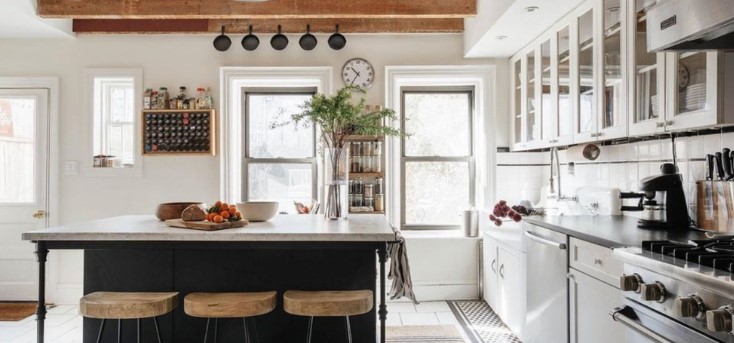
It's always a thrill when interior designers reveal their take on trends that are worth embracing. If you've been thinking of upgrading your kitchen in some way, whether it's complete with a large island or a small, charming layout, you'll appreciate this list of top kitchen trends for 2022. These design pros suggest popular countertop choices, cabinet colors, backsplash tile ideas, sought-after paint options and much more to help you craft your dream kitchen.
Looking to experiment with a striking hue? Varying shades of green are all the rage right now (but that doesn't mean there's no longer room for white kitchens). Can't figure out if a butcher block countertop or vintage furniture is right for your design scheme? You'll find these answers and much more here.
Use these expert insights to inspire your kitchen renovation project or simply experiment with a design trend or two to give your cooking space some much-needed personality. Soon enough, you'll have a stylish space that better reflects your aesthetic and lifestyle.
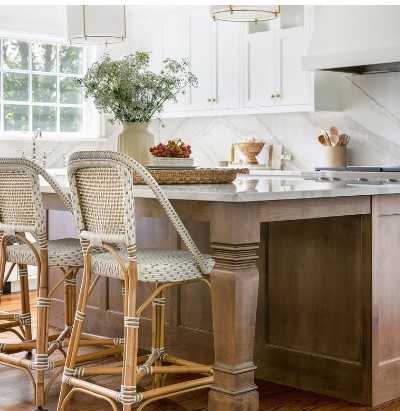
Darker Stains
“An overall kitchen trend we’re consistently designing with is the increase of warmer, darker stains. Stained cabinets add warmth to an otherwise all-white kitchen. They also tend to be more durable than a painted cabinet, so they're great for high-traffic areas like your island.”
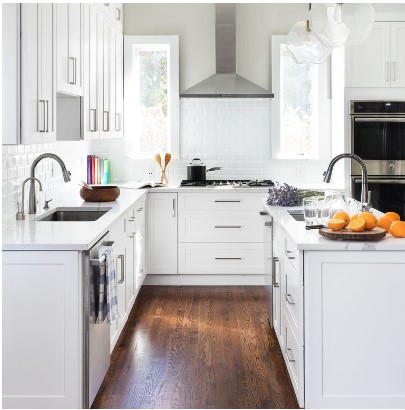
Monochromatic Spaces
“Monochromatic kitchens are a great way to form a cohesive look while injecting harmony into the space. This all white kitchen brings in bright light and really stands out against the dark stained floors.
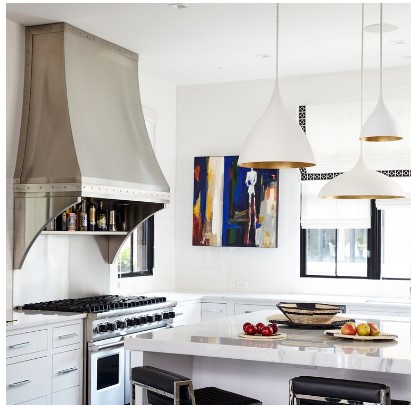
Statement Hoods
"Statement hoods are a great way to create a central focal point in a kitchen. Coordinating your hood and range top also draws the eye up and creates a clean, bold look.”

Top 5 Reasons You Want to Hire A Realtor To Sell Your Home... And How A Realtor Proves their Worth!
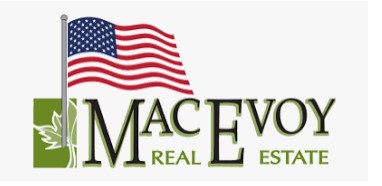
Article by: Mac Evoy Real Estate Co.
You may have been considering selling your home or building or business, and thinking --why shouldn't I try selling on my own? Or you may have thought --if the rumors are true and there is a severe shortage of properties available in my market, why don't I just throw a sign on the lawn and add it to a For Sale by Owner site for a bit?
Opposite to what you might believe, hiring a realtor actually nets you much, much more money and assures you a safe and efficient transaction, and here is why:
1) More Money to You. When you choose to hire a realtor, and we recommend you do hire a seasoned, very experienced team like ours at Mac Evoy Real Estate Co., you are hiring someone to protect your interests and your largest asset. Versed in hundreds if not a thousand different closed transactions and with experience on home inspection, appraisal, mortgaging and other buyer and seller issues, our eyes and ears are seeing things better than you can, as a seller who may have sold 1-5 properties in a lifetime. We will see problems way before they arise and be able to navigate the selling process with ease. We will avoid taking a potentially 'bad' contract, and then advise of any issues to do or not do for a home inspection. Oftentimes, we save our sellers thousands of dollars by stopping them from making repairs or home remodels that they will not realize a net gain from doing. Beyond that, we are part of a huge network of realtors who have interested parties for your property. This word-of-mouth advertising is often the largest factor in obtaining a buyer who is willing and able to pay more. More marketing means a higher sales price, every time.
2)Much Less Chance of a Lawsuit. You may not be aware that licensed real estate brokerages are required to carry several insurances. We pay to have that insurance to protect ourselves in our everyday business when dealing with the public. Most homeowners do not have that kind of insurance. So, if you thought you would just invite the general public into your home and see what happens ---wow are you exposing yourself to a lot of potential areas of concern. There are many litigious areas of home selling. There are all kinds of laws that protects buyers right now. There are many home disclosures that have to be made to buyers, and the laws change every year. I cannot imagine that the average home or building owner is even aware of most of the items that need to be disclosed to the buyer of their property. Licensed Florida Realtors are required to complete re-education every 2 years just to keep up with legislative changes that affect home and land sellers in the state. Beyond that, we know what hot issues are affecting home and building and land sales and protect a seller with our knowledge of what to disclose and how to disclose it in the sales process. If you think by selling without a realtor, you can save money and hide defects or avoid inspection or financing issues--you are mistaken. Because although Realtors do ask more questions of sellers and buyers, and divulge every detail to prospective buyers, we know how to do that and still sell your property for more money! We also know how to present properties and how to prevent lawsuits after closing. Hiring a licensed Realtor means you are off the "front lines" in negotiating and dealing with issues that do arise in selling.
3) Physical Safety of You and Your Loved Ones. If you think you are going to sell your home and put your sign out on your property --you are giving ANYONE the right to contact, you and the right to access your property. Do you really want to meet with strangers at any time of day or night and have them in close proximity to you and your family and valuables? When you hire a licensed Realtor, we are licensed, fingerprinted and insured. In other words, we are a known, trackable entity. If you open your doors to strangers--you have NO IDEA if they are who they say they are, and if they are a criminal, casing your home or not. Do not take that great risk. Hire a professional to 'vet' the inquiries and keep a good eye on who is accessing your property.
4) Faster, Easier Sales Process. As a realtor, we do not get paid until your property actually closes. Therefore, we are highly motivated to get you to closing fast and with accuracy. We have to get through many hurdles. This includes a contract --with good terms and conditions, checking into cash or mortgage deals, the home inspection phases, and appraising phase. Beyond that, we ensure your home permits are closed, and that if there are any title issues we are there, working with closing agents and other professionals to get you to closing. Double the ease of a sale with a realtor if you are handling your family’s estate property or your elderly parents' property. Do as a billionaire once wrote in his book on being a successful millionaire: "Hire the BEST Realtor, and then Hold them Accountable." (Donald Trump) At Mac Evoy Real Estate Company, we want you to hold us accountable and we are up to any residential or commercial challenge you throw at us! Let us make you wealthy and be your trusted real estate brokerage!
5) Excellent, current recommendations on what to do with your home or property to sell for more money, and great ideas on what to do with your closing proceeds. I do not know about you --but if I had the largest asset I owned up for sale --I might want to consult with a professional who could best advise me on the transference of that solid wealth asset. Often 30 minutes of time with me, means that I am giving a home or building seller information they did not have or ideas they hadn't yet thought of to really protect their best interests. We want repeat clients and we have them at Mac Evoy Real Estate Co. Please see our reviews on Realtor.com or MacEvoy.org. We have those recommendations from satisfied clients because we have exceeded their expectations. I mean if you ask for advice when you color your hair or buy an outfit to wear. Is there a reason you would not want a professional who could counsel you on why you should or should not sell your largest asset in the world? From our recommendations, we have advised clients on what markets are hot to re-invest in, or in some cases, we have referred them to financial advisors who are having excellent results for other clients. We might tell another client to hold off on selling until their investment has hit its highest sales potential. You will not know any of that if you sell without calling us!
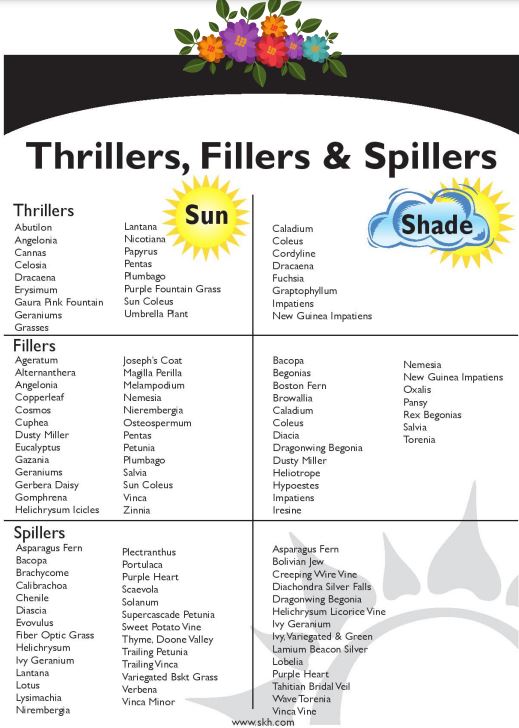

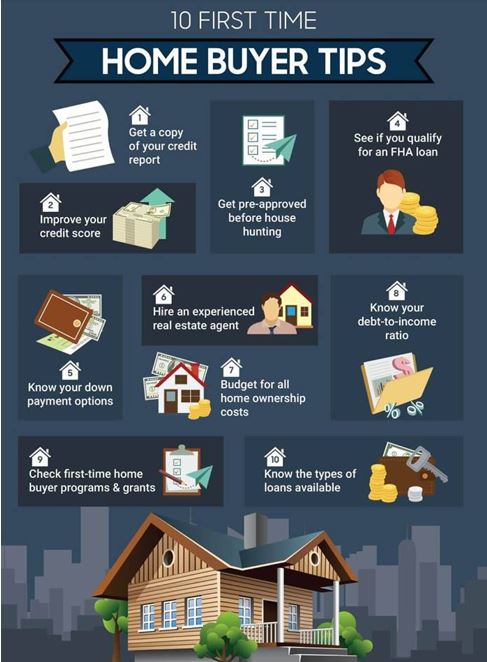
First-Time Homebuyer Tips—And Mistakes to Avoid
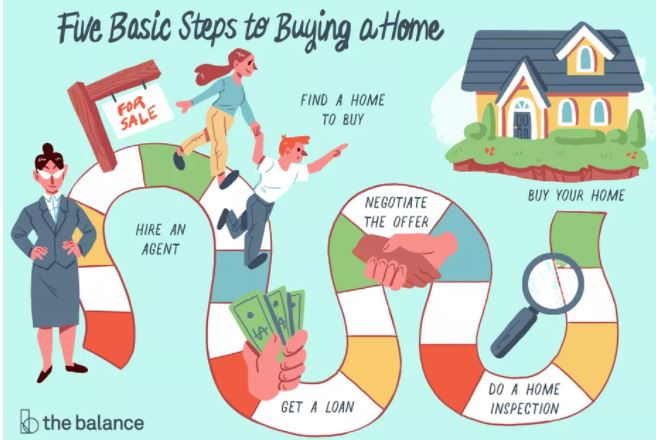
Article by: Elizabeth Weintraub
Homeowners who aren't familiar with the buying process can often benefit from a few first-time homebuyer tips. It can help to know what they're getting into. Steps in the homebuying process can vary from state to state and can depend on local custom, but there are basically only five: an agent, find a home, get a loan, negotiate, and get a home inspection. They don't necessarily happen in this order.
Key Takeaways
Don't schedule tours for more than seven homes at a time—your time is better spent researching the area in which you want to live and focusing on a few potential homes.
Getting preapproved for a loan will give you a better idea of what you can afford to buy, and it will make your offer more competitive.
A good buyer's agent can give you a fair expectation of how much a seller might accept for a home.
If an issue comes up during the home inspection, you can request a repair, but the seller is not generally obligated to repair it.
Hire an Agent
You don't have to hire a buyer's agent if you prefer to go to open houses or look through a mumbo-jumbo of homes online, but doing so will save you time and probably a bit of uncertainty as well.
An agent can send you listings directly from MLS that fit your parameters.
Agents often know of new listings that are about to hit the market before they do.
You can burn the agent's gas and not your own when you travel about to tour homes. Some agents will even preview homes for you.
An agent can generally spot overpriced listings and advise you accordingly.
The National Association of Realtors indicates that 16% of buyers reached out to an agent first in 2019 before doing anything else, but this is significantly less than the number who started by searching for properties online—44%. But ultimately, 89% of buyers ended up purchasing their homes with the assistance of an agent or broker.
Find a Home to Buy
Finding the right home is not always an easy task. You probably won't want to schedule more than seven homes at a time because any more than that will make your head spin.
Most buyers do a lot of research before ever stepping foot in a home. They spend an average of six to eight weeks trying to figure out where they want to live, according to the National Association of REALTORS. Most buyers end up buying a home after two or three home tours once they've selected a neighborhood.
Get a Loan
It's not always necessary to have a mortgage broker or bank lined up before buying a home, but it's smart to get loan preapproval in advance. Preapproval isn't a guarantee that you'll ultimately get the financing, but it lets you know for sure how much home you can afford.

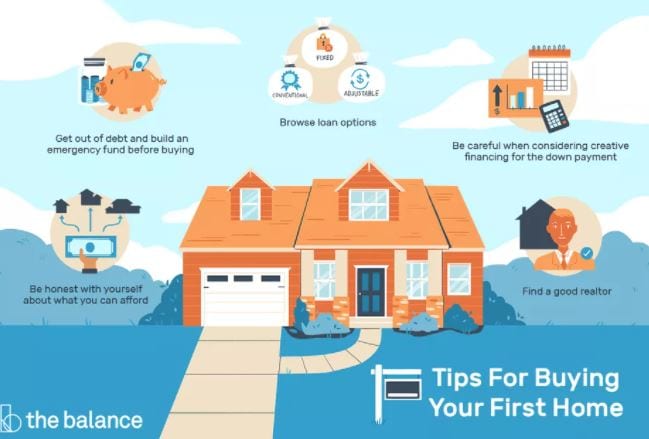
Things to Buy After Buying a Home
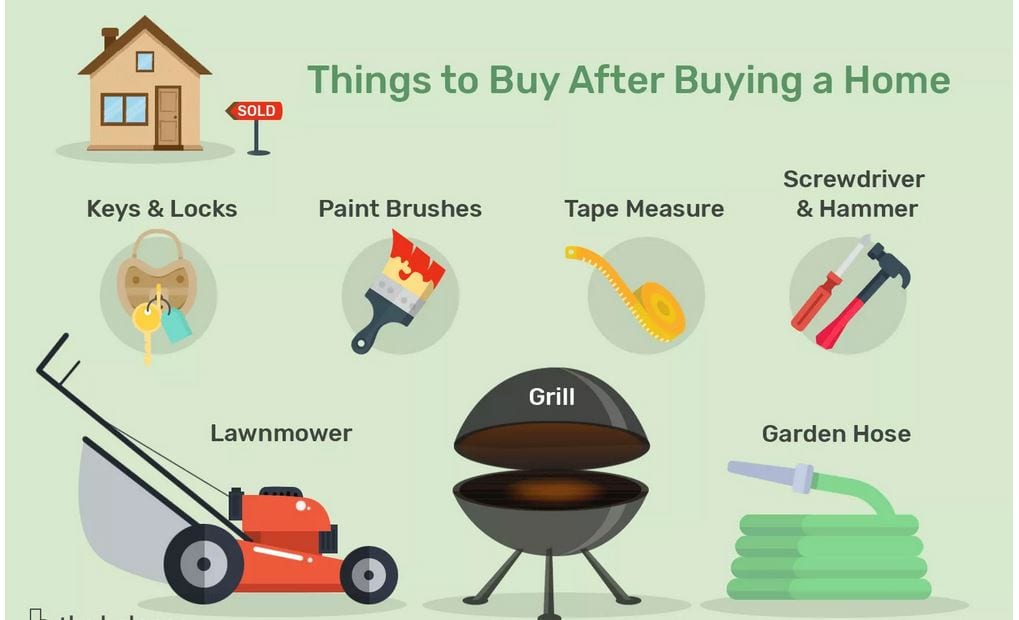
Ironically, one of the first things homebuyers have to do is buy more things. This news comes as a shock to many first-time homebuyers, especially those who previously lived in an apartment. If you're saving up for your first home, make sure to include these in your budget along with closing costs.
Keys and Locks
After buying a home, one of your first purchases should be new door locks. You can either replace the locks or "rekey" them so that old keys no longer work. Changing locks isn't difficult to do on your own, but you can hire a locksmith if you'd rather leave it to the professionals. This is also a good time to think about a place to hide a key so you won't get locked out of your house. It's important to change locks because you don't know who has a copy of the key from the old owner. It's common for homeowners to leave keys with friends and family, and a few spare keys may still be dangling from keychains somewhere out there. Even if you're buying a new home, keys are still handed out to any contractors working on the property.
Appliances
Not all appliances are "fixtures," or things that get sold along with the home. Many new home sales will include appliances, but when buying an older home, the seller may take some of the appliances. If new appliances are out of your price range, then you can buy used appliances. However, if you're considering older, relatively inefficient appliances, the initial savings of the older appliances should be compared to the long-term utility bill savings of newer appliances.
Lawn Mower
It's likely that the house you buy has a grass lawn, and if so, you will need to buy a lawn mower (or hire a gardener). The best mower for your home will depend on the size of your lawn. Consumer Reports publishes reviews that are extremely helpful when comparing brands. You can also search for used mowers on Craigslist or in your local newspaper.
Garden Supplies
Every home needs a garden hose, and don't forget about weed-whackers, shovels, and rakes, as well. You can buy basic gardening supplies like these at any major department store. Other tools to consider include a push broom, which comes in handy for sweeping your garage floor. Many brooms also have handles that unscrew, so you can use it as an extension pole with a wall sander. Depending on how much you plan on gardening, you may want to pick up extra tools like a watering can and wheelbarrow.
Tools and Repair Items
Every home needs a well-stocked toolbox. Aside from buying a toolbox itself, other essential items include:
Hammers: ball and claw
Screwdrivers: flathead and Phillips
Assorted screws and nails
Hacksaw
Pliers
Plumber's wrench
Basin wrench
Small power drill and drill bits
Staple gun
Tape measure
Measured by acres grown, grass lawns are the largest irrigated crop in the United States.
Deceptive Mortgage Ads

Article Submitted by: Florida Mortgage & Loan
If you’re looking for a mortgage either to purchase a home or to refinance, you may see or hear ads offers of low rates or payments. They may look like they are from your mortgage company or a government agency but whether you see these on the Internet, TV or they come by e-mail or in your mailbox you should be cautious. While the offers seem tempting some are terribly flawed: they don’t disclose the true terms of the deal as the law requires.
To help you recognize an offer that may be less than complete, the Florida Mortgage & Loan wants you to know the buzz words that should trigger some question marks and follow up questions so you know what information to insist on after you’ve read the ad.
A LOW “FIXED RATE”
Ads that tout out a “fixed” rate may not tell you how long it will be “fixed”. The rate may be fixed for an introductory period only, and that can be as short as 30 days. When you shop for a mortgage, you need to know when and how your rate, and payments, can change.
Very Low Rates
Are ads talking about a “payment” rate or an interest rate? This important detail may be buried in the fine print. The interest rate is the rate used to calculate the amount of interest you will owe the lender each month. The payment rate is the rate used to calculate the amount of the payment you are obligated to make each month. Some offers advertise a low payment rate without telling you that ie applies only during an introductory period. What’s more, if the rate is less than the interest rate, you won’t be covering the interest due. This is called “negative amortization”. It means that your loan balance is actually increasing because you’re not paying all the interest that comes due, and the lender is adding the unpaid interest to the balance you owe.

Very Low Payment Amounts
Ads quoting a very low payment amount probably aren’t telling the whole story. For example, the offer might be for an Interest Only (I/O) loan, where you pay only the amount of interest accrued each month. While the low payment amount may be tempting, eventually you will have to pay off the principal. Your payment may go up after an introductory period, so that you would be paying down some of the principal or you may end up owing a “balloon” payment, a lump sum usually due at the end of a loan. You must come up with the money when a balloon payment is due. If you can’t, you may need another loan, which in turn means new closing costs and potentially points and fees. And if housing prices are falling you might not be able to refinance to lower your payments.
Teaser Rates
• Mortgage rates near 30-year lows!
• Rates as low as 1%!
• You are paying too much!
• Who doesn’t want to reduce their mortgage payments?
• Loan amount $300,000 – pay only $900 per month!
Ads with “teaser” short term rates or payments like these don’t often disclose that a rate or payment is for a very short introductory period. If you don’t nail down the details in advance about your rates and payments for every month of the life of your loan, expect payment shock when the rate and payment increase dramatically.
Saving on Kitchen Cabinets
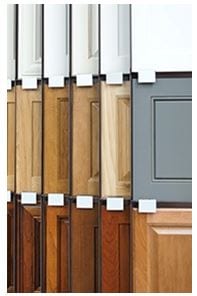
When it comes to home renovations, a kitchen remodel is on the higher end of the price spectrum. One of the biggest line items in any kitchen remodel is cabinetry, which can account for up to 40% of your total budget. If you're willing to think outside the box a little, you can save yourself some money and still make a solid long-term cabinet choice.
As always: do your research
Take time to learn about the materials that separate budget cabinets from premium options.
Particleboard is the cheapest option, but it's not incredibly durable and degrades easily if it comes in contact with water.
Medium-density fiberboard has a slightly higher price tag but boasts superior quality without breaking the bank. MDF is very water-resistant and actually resists warping and expansion better than expensive hardwoods.
Solid wood cabinets are beautiful and durable when cared for properly, but they're expensive, heavy, and just as susceptible to damage from moisture and fluctuations in temperature as some cheaper options.
Consider pre-built boxes with premium doors
If you want the high-end look without the price tag, a creative option is to use premade boxes from IKEA, Lowes, or Home Depot, but order custom doors. You'll get the outward look of custom cabinets at a fraction of the cost. This is an especially smart option if the sides of your cabinets are mostly concealed by walls.
Get unfinished cabinets
You'll save money by purchasing unfinished cabinets, but you'll still have to paint or stain them. Stain is something you can do on your own, but achieving a clean paint job is tricky and may require the help of a professional. You'll have to compare costs to decide if it's worth it.
Use open shelving
If you want a new look for your kitchen but the numbers still aren't lining up, consider open shelving. When executed well, open shelves can look great, and you'll save thousands not buying cabinet uppers. Your kitchen will feel brighter and more open, but just keep in mind this option may not appeal to every potential buyer when it comes time to sell.
Out2News.com LLC. is a photo journal featuring people, “Who they are, what they do and where they do it”.
Do you have something to say, an event to talk about? An event you would like to have covered? Do it here!
Email your story or request to: rshall@out2news.com
Out2News adheres to full compliance with C.O.P.P.A. (Children’s Online Privacy Protection Act of 1998)
“YOUR" Treasure Coast Newspaper & Photo Journal
How to Improve Your Home With Modern Technology

Article by: Mark Baker
Days are gone when only a few people can enjoy the benefits of technology at home. Now spending a little more bucks, even an apartment owner can enjoy amazing amenities. Your house looks more organized. Even smart technology users believe that they can save time running devices. If you are too planning to improvise your home this year, then why not avail the advantages of changing technology at home.
Add Electric Fireplace
Adding an electric fireplace helps to remove your old and tiring wood-burning or gas fireplaces. You can enjoy the technology with a click from the iPhone app. A real flame fireplace with a cracking long sound will be ready to serve. You can enjoy the warmth of heath in a short time without polluting the environment. Importantly, breathtaking designs and shapes can fit anywhere and enhance your renovated house appearance.
Let the Fridge Help
Even a modern kitchen seems incomplete without smart refrigerators. A large smart screen on the refrigerator can allow you to see what is inside the fridge. If the door is kept open, a system alert lets you know and asks you to take steps. The best part, the voice recognition system helps you to display delicious recipes. Therefore, you can watch and cook simultaneously. Apart from this, measuring conversations to remind the grocery list helps you to give reminders.
Protect Your House
Keeping your house secured is the responsibility of every homeowner. Installing smart locks at the door and cameras for surveillance is becoming essential these days. You can also look for a smart security system that contains doorbell cameras to keep an eye on the front porch. You can check unwanted activities in your house from anywhere as these systems alert the homeowner with an alert system too.
Add a USB Charger in a Snap
In the electric age, one charger supporting all devices is not a surprise. It helps to save space and handle other device charges. So, install a cool gadget at home and allow all devices to work smoothly. Even if there is no receptacle replacement needed, you can port the USB charger and plug it anywhere. It is easy to install and plates overage protect from electric shocks. Therefore, if you have kids and pets at home you can live stress-free.
Go with Smart TV Selection
Now no more need to struggle with traditional televisions and watching the same content. Adding smart TV in your living room is a luxurious choice to add value to your home. You can watch unlimited content from the internet, cable, and other sources. Even there is no need to add an extra system for playing games. Smart tv is enough to meet all your requirements at one destination. Modern TV works through mobile apps and voice control smart speakers, therefore, no need to worry about the lost remote control
Bottom Line
The addition of technology products can turn your common house into a contemporary house. Therefore, do not leave any opportunity to impress your guest and you too from availing the benefits of emerging technology. The best part these technology changes keeps your house safe and secure.
Out2News.com LLC. is a photo journal featuring people, “Who they are, what they do and where they do it”.
Do you have something to say, an event to talk about? An event you would like to have covered? Do it here!
Email your story or request to: rshall@out2news.com
Out2News adheres to full compliance with C.O.P.P.A. (Children’s Online Privacy Protection Act of 1998)
“YOUR" Treasure Coast Newspaper & Photo Journal
The Pros and Cons of Different Styles of Doors
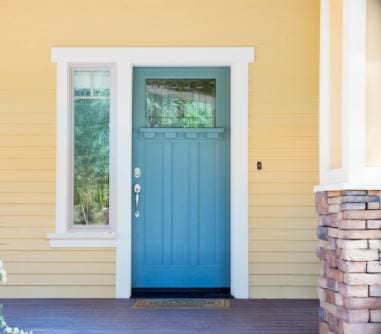
Article by: John State
New exterior doors not only give your home a fresh and updated look, they can also significantly reduce your utility bills. Modern, energy-efficient materials mean your new doors can pay for themselves over time.
Entry Doors
Wood
Wood is a popular choice among homeowners for a high-end look, but it tends to be expensive and require significant maintenance with annual painting and/or staining needs to maintain its appearance.
Steel
Steel has a reputation for being inexpensive, secure, and long-lasting, but it tends to have a shorter life span and dent more easily than wood and fiberglass. A steel door will usually last only ten years on average in a high-humidity environment, and both wood and fiberglass are able to outlast that life span.
Fiberglass
Fiberglass doors are virtually maintenance-free and have available finishes that can mimic the appearance of high-end wood. They feel lightweight but are durable and can last from 15 to 20 years, and include an energy-efficient foam core, which means they insulate well against heat loss.
SLIDING PATIO DOORS
Sliding doors don’t require additional space to open; they slide on a compact set of tracks that stack on each other to open up your indoor living space to the outdoors. However, you can only open a sliding door halfway, they tend to be noisy when opening, and some people find their weight difficult to maneuver.
FRENCH DOORS
A set of French doors provides a traditionally elegant entrance into your home, provides a high-end look, and can open the entire width of the door frame for maximum ventilation. They require floor space to open, and this might make them an undesirable option for a small or cramped location.
BIFOLD DOORS
Bifold doors are easy to install and maintain, versatile enough to suit a modern or traditional design aesthetic, and include multiple locking points for enhanced security. The downsides are that they include a lot of frames that partially obstruct views and don’t include a threshold. They also may need to stack inside your home, which might intrude on your living space.
LIFT & SLIDE DOORS
Lift and slide doors operate differently than sliding doors – you turn a handle downward to lift the door panel up from the track and the door rolls on heavy-duty wheels to allow opening with little effort. A lift and slide door isn’t able to open invisibly, unless you install a wall pocket, as panels must stack on top of each other as the door opens. They also allow you to control the size of the opening, for customized ventilation and quick entry and exit.
7 Signs That It’s Time To Replace Your Windows

Article by Kelly Brown
It’s not always easy to determine if it’s time to replace your windows. For most homeowners, it’s clear: your windows might be old and drafty, or they could be original to your home. However, for some homeowners, it might not be as obvious. In fact, your windows might not have any noticeable signs that it’s time for them to be replaced. In that case, how do you know your windows need to be replaced? Our window replacement experts compiled a list of warning signs you need to be aware of before you start your project.
Condensation
If you notice condensation between your windowpanes, we highly recommend replacing your windows. Moisture between the panes of glass is a telltale sign your seals have failed – an issue that isn’t easily fixed. If you notice seal failure, you might be able to replace the panes of glass; however, you’ll need to contact your window manufacturer for more information. In most cases, your windows will need to be replaced to fix the issue. Replacement windows from Window Nation are built with top-of-the-line window glass to ensure your windows remain condensation-free for years to come.
Drafts
Drafts are one of the most noticeable signs it’s time to replace your windows. Your old windows often become drafty over time, allowing the comfortable air from inside your home to escape. You might feel the air from outside in your home when you stand close to your windows, or you might notice higher energy bills. Energy loss through old, drafty windows accounts for nearly one third of your heating and cooling costs – start saving money by upgrading your old, drafty windows with modern replacement windows from Window Nation.
Hot to the Touch in Warmer Weather
Outdated replacement windows are often single pane with little protection from the warm air outside. If you notice your windows are hot to the touch in the summer, your windows are most likely poorly insulated. We recommend upgrading your windows with modern, well-insulated replacement windows to prevent the hot summer air from entering your home.
Cold to the Touch in Colder Weather
Insulation issues only get worse in the winter – if you notice your windows are cold to the touch in cooler weather, you’ll need to upgrade your windows. Modern replacement windows are well-insulated to keep your home comfortable even in the coldest of temperatures. Well-insulated windows are particularly important in colder areas like Boston, Kansas City or Indianapolis – if you notice your windows are cold to the touch, we recommend meeting with an exterior design consultant at Window Nation to discuss our replacement window options.
Cracked or Broken Window Frames
A small crack in your window frame might not be the most urgent issue; however, it’s important to fix the cracks before they spread. If you catch a crack early enough, you might be able to repair the crack with no issues. However, if the crack continues to spread, it might be time to replace the window.
Cracked Windowpanes
Unlike cracked window frames, a crack in your windowpanes is a major issue that needs to be addressed. Cracked windowpanes aren’t just unsightly: they could spread and cause bigger problems for your home’s energy efficiency. You could replace the cracked pane with replacement window glass; however, in some cases, it’s best to replace the entire window. If your windows are more than fifteen years old or original to your home, window replacement could save you money in the long run.
Outdated and Unsightly Windows
Sometimes your windows might function well, but they look old and outdated. If your home needs a curb appeal boost, we recommend replacing your windows with modern replacement windows from Window Nation. Our windows are custom-made to fit your home’s needs. We offer a variety of style and color options, so you can find the perfect fit for your home.
What to Look for When Buying a House

Article courtesy: Zillow
While everybody knows that buyers shop based on price range, there are many additional considerations to make when looking for a home. And, most buyers end up refining their criteria once they start touring homes. Ultimately, your home criteria should depend on your personal lifestyle and needs. Regardless of what you’re looking for, here are some general rules you should follow to make sure you’ll be happy with the home you buy for the foreseeable future.
What are the top features buyers look for in a home?
Neighborhood wants and needs for buyers
Safety: 82% say a neighborhood that feels safe is very or extremely important
Walkability: 60% say it’s very or extremely important
Preferred neighborhood: 56% say it’s very or extremely important
Proximity to shopping, services and/or leisure activities: 53% say it’s very or extremely important
Optimal commute to work or school: 52% say it’s very or extremely important
Offers a sense of community or belonging: 48% say it’s very or extremely important
Close to family and friends: 46% say it’s very or extremely important
In preferred school district: 43% say it’s very or extremely important
Home Features Buyers Want
Within initial budget: 83% say it’s very or extremely important
Air conditioning: 78% of buyers say it’s very or extremely important
Preferred number of bedrooms: 76% of buyers say it’s very or extremely important
Preferred number of bathrooms: 67% of buyers say it’s very or extremely important
Private outdoor space: 67% of buyers say it’s very or extremely important
Preferred size/square footage: 67% of buyers say it’s very or extremely important
Floor plan/layout that fits preferences: 67% of buyers say it’s very or extremely important
Six Important Questions to Ask Yourself
1. Search for the right price
2. Prioritize the location
3. Think long term
4. Assess property condition
5. Don’t focus on minor cosmetic details
6. Stick with your must-haves

How to Create Your Ultimate Outdoor Kitchen
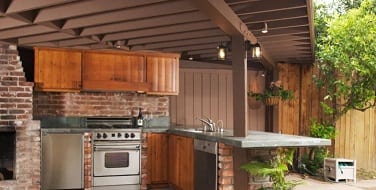
Article by: Natalie Wise
Create a beautiful outdoor cooking space for relaxing and entertaining all summer long.
As summer approaches and temperatures start to rise, no one wants to spend time inside sweating over a hot stove. With an outdoor kitchen, you can make the most of the beautiful warm nights by spending them with your friends and family.
Whether you have thousands to spend or a just few hundred to splurge, create your own outdoor kitchen and enjoy all it has to offer.
Upgrade your grill
A rusty, dusty grill doesn’t inspire lingering outdoor evenings. Upgrade your outdoor grill and take care of it all year round for a stand-out outdoor kitchen. A standard grill will cost you $150 to $300, and top-of-the-line outdoor ranges may be upwards of $1,500.
Before buying the biggest and best grill, consider how you will use one. Will you be feeding the whole soccer team? Or perhaps grilling some steaks for a romantic dinner for two? Look for a grill with features you will actually use and not just the latest trends.
Enhance your seating
If your basics are up to date, then you’ll want to upgrade your patio furniture and seating options too. If you plan on dining outside often, invest in an actual dining table and appropriate chairs. Eating a gourmet dinner off your lap downgrades an otherwise luxurious experience.
If you’re looking for more versatile pieces, sleek contemporary options coordinate nicely with most outdoor kitchen setups. Expect to spend a good chunk of change on quality furniture, but remember: With the proper care and maintenance, it can last as long as high-end interior pieces. Make sure you have a plan for the off-season, whether that’s moving outdoor furniture to indoor storage or securely covering it to protect it from the elements.
Add the extras
Want a prep sink? Wine fridge? Ice machine? Built-in smoker? You got it. The sky’s the limit when it comes to custom additions — or rather, your budget is the limit. Think carefully about your space before making a wish list.
Perhaps a full chef’s kitchen won’t quite fit in your backyard, but a beautiful wine fridge and some extra counter space are just what you need to take your outdoor kitchen to the next level.
Some features require installing or extending utilities (think: water or electricity), so don’t forget about portable additions such as a bar cart — which adds class without hassle.
Make it comfortable
Think about how you will provide amenities to make being outdoors comfortable, such as shade, heat (if using your space year-round), and perhaps even a few extras like a TV or audio equipment.
Tucking the seating close to the house may help you take advantage of a porch or awning. Otherwise, structures such as a light-strung pergola add shade during the day, light at night and atmosphere all the time.
If you have the room, the addition of a fireplace allows for a longer entertaining season. Outdoor kitchens don’t have to be just for summer, after all.
If you like to have some indoor comforts while enjoying your beautiful outside oasis, television and music can be connected outside — although it can be expensive. Bluetooth or portable speakers, a projector and a large sheet, or even an old-fashioned radio are more budget-sensitive options for those looking to add a little fun to their outdoor space.
Apply your own style
Create an outdoor kitchen that suits your style and taste. If you’re working with an existing space, be sure to embrace the style and play up the features, such as dark wood, stone and classic columns.
If you’re starting from scratch, take a look at your indoor design and see what features you like. Then consider incorporating those color schemes, design styles or even furniture shapes into your outdoor kitchen.
While you can’t go wrong designing your outdoor space, consider designs and colors that are versatile so you’re not limited if you want to mix things up in the future.
Make it yours
Your outdoor kitchen should be a comfortable, relaxing space for entertaining or unwinding after a long day of work. Make yours an escape that works for you.
When planning your outdoor kitchen, think about adding one or two small luxuries that will make you excited to enjoy your space. These can be as small as pretty tea lights scattered around or as large as a wood-burning pizza oven.
What Is a Property Manager Responsible For?
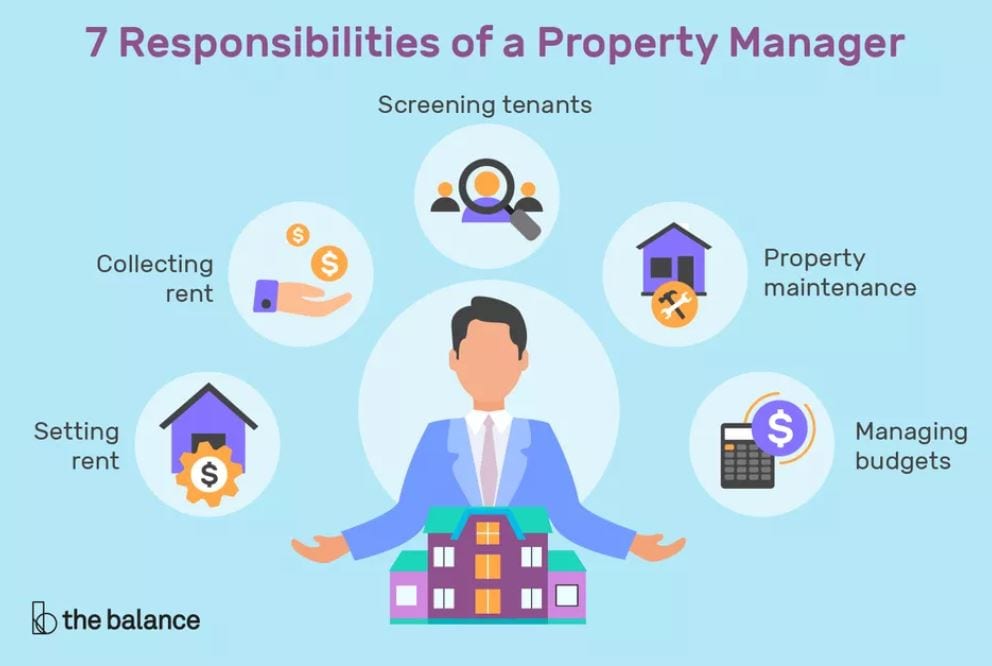
Article by: Erin Eberlin
If a landlord wants help taking care of the daily responsibilities at their rental property, he or she can hire a property manager. A property manager can be hired for one simple task, such as collecting rent, or can be completely responsible for the operations at the rental property.
Here are seven important roles a property manager can take on.
Responsible for Managing Rent
Collecting rent is a basic responsibility of any landlord. Therefore, it is one of the most common jobs a landlord will pass on to a property manager. A property manager's rent responsibilities could include:
Setting Rent: The property manager would set the right rent level to attract tenants to your property. To determine the rent range, the property manager will look the market where the property is located and analyze comparable properties in the area.
Collecting Rent:
The property manager will set up a system for collecting rent from tenants. To ensure optimal cash flow they will set a date to collect rent each month and strictly enforcing late fees.
Adjusting Rent: The property manager can increase the rent each year, according to individual state and/or municipal law. They can also decrease the rent if they feel it is necessary.
Responsible for Managing Tenants
Managing tenants is another core responsibility of a property manager. The property manager may be involved in finding and screening prospective tenants, managing daily complaints and maintenance issues and handing tenant move outs and evictions.
Finding Tenants:
Property managers are responsible for filling vacancies. They will advertise the rental and create a compelling ad. They also understand what attracts tenants, so they can offer tips to help makeover the property.
Screening Tenants:
Property managers should have a consistent screening process, including running credit checks and criminal background checks, which can decrease your chances of tenant turnover. Experienced property managers have seen hundreds, even thousands, of tenants, so they have a better idea of how to select the right tenants; those who will pay their rent on time, have a longer tenancy and create fewer problems.
Handling Leases:
This can include setting the lease term and making sure it has all the necessary clauses to protect the owner. This includes determining the amount of security deposit required.
Handling Complaints/Emergencies:
The property manager may deal with maintenance requests, noise complaints and handling emergency situations.
Handling Move Outs:
When a tenant moves out, the manager is responsible for inspecting the unit, checking for damages and determining what portion of the security deposit will be returned to the tenant. After move out, they are responsible for cleaning the unit, repairing any damages and finding a new tenant.
Dealing With Evictions:
When a tenant does not pay rent or otherwise breaches the terms of a lease, the property manager understands the proper way to file and move forward with an eviction.
Maintenance and Repairs Roles
The property manager must keep the property in safe and habitable condition. Property managers are responsible for the physical management of the property, including regular maintenance and emergency repairs.
Property Maintenance:
This includes performing preventative property maintenance to keep the property functioning in top condition. For example, they are personally in charge of, or must hire someone to, exterminate, check for leaks, landscape, shovel snow and remove trash. This maintenance aims to keep current tenants happy and attract new tenants.
Repairs:
When there is an issue, the property manager must fix the problem or hire someone else to do it. They often have a large network of reliable plumbers, electricians, carpenters and other contractors.5
Knowledge of Landlord-Tenant Law
Good property managers have an in-depth knowledge of statewide and national laws regarding the proper ways to:
Screen a Tenant
Handle Security Deposits
Terminate a Lease
Evict a Tenant
Comply With Property Safety Standards
Supervising Responsibilities
Other Employees:
If there are other employees in the property, such as a concierge or security personnel, the property manager is responsible for making sure they are doing their job. The property manager can set their salaries and even fire them.
Vacant Properties:
Property managers are often hired to look after vacant properties to make sure there has been no vandalism and to perform routine maintenance. They also make sure contractors and other repairmen are completing their work in a timely manner.46
Responsible for Managing the Budget/Maintaining Records
Property managers can be responsible for managing the budget for the building and for maintaining all important records.
Managing Budget:
The manager must operate within the set budget for the building. In certain emergency situations when the occupants (tenants) or physical structure (investment property) are in danger, they may use their judgment to order repairs or likewise without concern for the budget.
Maintaining Records: The property manager should keep thorough records regarding the property. This should include all income and expenses; list of all inspections, signed leases, maintenance requests, any complaints, records of repairs, costs of repairs, maintenance costs, record of rent collection and insurance costs.
7 Things to Do Before House Hunting

Article by: Robin McDaniel
House hunting can be overwhelming, especially if you’re a first time buyer.
You have to think about the location of the property, square footage, layout, finishes, flooring, and oh yeah — getting a mortgage. The list is endless.
It’s exciting and exhausting at the same time. How do you even know where to start in the process?
Whether you’re hunting for your very first house or your fifth, the process will be much smoother if you have a plan and a house hunting checklist.
If you’re jumping into the real estate market, here are 7 things to do before you start house hunting.
Know Your Credit Score
First things first: don’t go house shopping without getting a mortgage pre-qualification.
Make a Budget
You should decide ahead of time what amount you’re comfortable with paying per month for your mortgage. Then go to your bank for your pre-qualification letter.
Find a Diligent Realtor
The next step is finding a realtor who will work for you. You want someone who will stand up for you in the final walk-through or at the closing table if something doesn’t go right.
Make a List of Needs, Must-Haves, and Wants
You may end up seeing so many properties your head will be left spinning. You might forget some of the things you were looking for in the first place.
Choose Your Location
It’s going to be really hard for your realtor to show you the best housing options for you if you don’t know the area you want to reside in. You’ll end up all over the place if you don’t.
Save an Emergency Fund
If you don’t have an emergency fund saved yet, buying a house isn’t a wise option.
Check Your Emotions at the Door
Buying a house is an emotional process, but do your best to keep your emotions out of it before you make a hasty and unwise decision about a house that’s financially out of your reach.
Even though it’s hard to keep emotions out of it, you need to in order to keep yourself from making a bad decision that could end up affecting you for years, and cost you a ton of money.
No matter what you do, try to make house hunting a fun process, because it should be. It’s not every day that you get to run around shopping for houses, so try to enjoy it! If you follow this checklist, then your house hunting process will be easy and painless.

